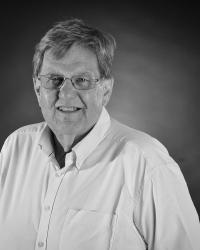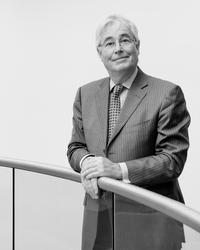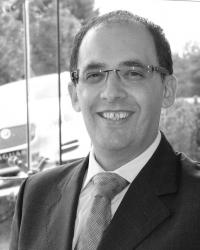2019 Winner's story
Breaking new ground - Stephen's time at Horiba MIRA
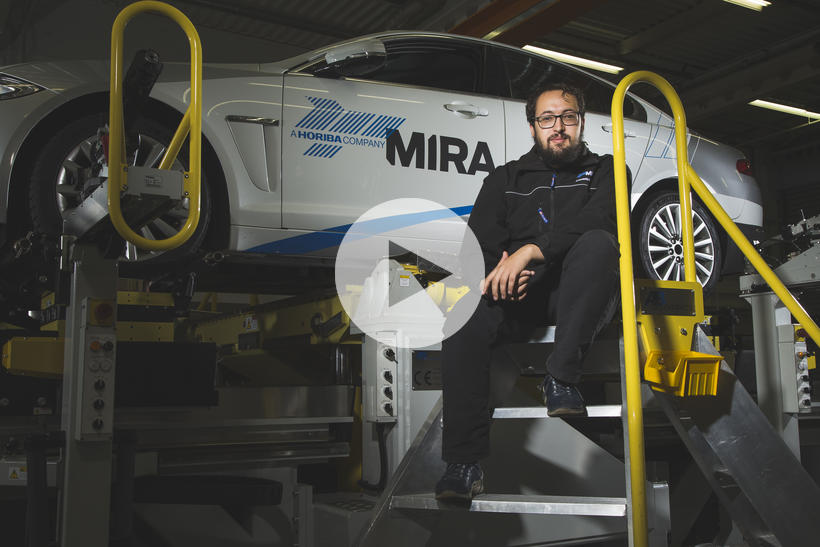
For the first time in the history of the Autocar-Courland Next Generation Award, one of the winner’s placement weeks has been spent at Horiba MIRA, a centre of excellence for vehicle engineering, design, testing and development. Or, in simple terms, an automotive engineer’s paradise.
The MIRA proving ground in Nuneaton, Warwickshire, was opened on the former RAF Lindley base in 1949. Today it encompasses 24 testing circuits, including those for evaluating high-speed, wet and dry handling, durability, noise, off-road and urban driving performance.
Around all this is what amounts to an engineering city – indeed, the largest such facility in Europe – containing 39 testing units, with everything from a wind tunnel to a facility developing tech for connected and autonomous cars. It has been growing since MIRA was purchased by Japanese automotive test systems maker Horiba three years ago.
“For an engineer, it’s special,” says 2017 Award winner Stephen Crossley, after four weeks with the company. “The breadth of what goes on is incredible, as are the facilities.”
Stephen was based with the Dynamics team, given that this is his main field of interest, but he got to experience several of Horiba MIRA’s main departments. His award-winning concept was for an active camber system, so Horiba MIRA set him the task of developing this through computer modelling. He was using ADAMS, a multi-body dynamics simulation software programme that is used across the industry and which Stephen had already experienced during his placement at McLaren.
There was also a chance to see the more practical side of things, working with the Kinematics and Compliance team, which has two suspension parameter measuring rigs – used by the majority of F1 teams – that apply heave, roll, pitch and steering motions, as well as cornering, braking and traction forces. It can measure wheel rates, steer and camber change and suspension swing arm vectors – all incredibly enlightening for vehicle dynamics-loving Stephen.
The modelling and testing was all brought to life when Stephen was taken out on Horiba MIRA’s wet handling track with a driver trainer, in a BMW M2. “That was a very interesting experience, with 365bhp under my right foot,” laughs Stephen. “At first, I was no good but I quickly learnt how to keep it pointing the right way, controlling oversteer.”
Then it was off to focus on Energy Efficiency, a department that has a new Advanced Battery Development Suite for developing and testing EV batteries. Here Stephen learnt about control systems, both for driving and charging. “It was really interesting to learn about EVs,” he says. “It seems they are currently engineered to build in an incredibly high level of electrical and functional safety.”
“Today’s EVs are designed to absorb crash energy through their chassis, avoiding the battery pack, rather than through the chassis and drivetrain, as in conventionally powered cars. But I’ve learnt that Horiba MIRA is looking at how to build that safety into the pack, so we can reduce the weight of EV platforms and therefore boost range.”
Stephen also learnt about the complication of temperatures and the sensitivity of battery performance and life to precise thermal management; having a well-engineered battery management system is essential. There’s also the challenge of designing a pack that can cope with lithium ion cells expanding and contracting with use.
Stephen then spent time with Connected and Autonomous Vehicles engineers, largely witnessing preparation for NCAP tests, making sure that cars comply with myriad safety protocols. This specific focus is the evaluation of advanced driver assistance systems (ADAS), where safety aspects of the systems determine whether there’s a pending collision and can warn the driver in time to react. And if they don’t, the car can automatically brake or steer to avoid or mitigate a collision.
Stephen also used computer aided design (CAD) software while at Horiba MIRA to model some mechanical systems, in particular elements of his Award-winning concept, and even a robot platform. “It was a really good chance to practice CAD,” he says. “The robot in effect acts as a software testing vehicle. One use has been searching for people in burning houses.”
Last but not least came the Advanced Emissions Test Centre, for which manufacturers are queuing up to certify their vehicles under the new WLTP regulations. Horiba MIRA, then, can provide a broader view of the industry than perhaps anywhere else. “My time here made me realise that I’d like to work with autonomous vehicles, developing the hardware and control software,” Stephen says. “I found it amazing that the latter is currently compromising for the former. “If you’re an engineer who wants to find something to specialise in, you’ll certainly find it here. “It would also be very interesting for someone from a non-engineering background, similar to how I discovered aspects of the automotive industry at Honda and Toyota that I’d never really thought about before.”
How they do it at Toyota
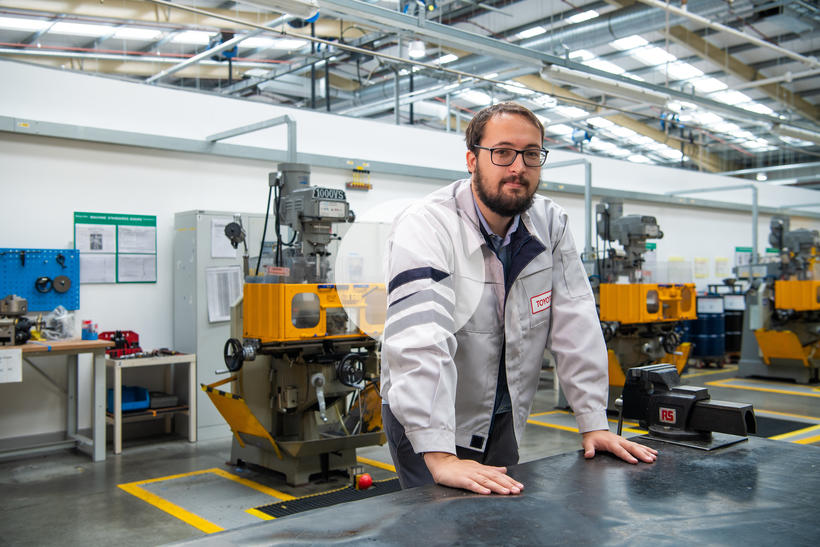
Stephen Crossley tells Ed Browne about month four of his car industry work experience
There are still 10 minutes to go before the cameras and lighting are set up for our interview, but Stephen Crossley is already engrossed in telling us all about his love of engineering. It’s immediately clear why he was a frontrunner in last year’s contest and how, despite being in his fourth month of an extensive automotive industry tour, he’s still as excited as if it was day one.
Following his placements at McLaren, Honda and Nissan, Stephen has nearly completed his month at Toyota GB’s headquarters in Epsom, Surrey, with some of his time also spent at the vast Toyota Motor Manufacturing UK plant in Burnaston, Derbyshire. So it’s a good time to reflect on what he’s learned.Stephen’s experience at Toyota has been exceptional in that he hasn’t been working solely in design and engineering. Because the production line at Burnaston currently churns out the hybrid Auris model, among other cars, Stephen has also been working on how best to market a hybrid vehicle and what dealerships can do to evolve in this direction.
“At McLaren, I was very much design focused. At Nissan, I was on the engineering side. With Toyota, I’ve spent the majority of my time in Epsom, doing benchmarking on what other competitors do with their electric cars and research into what Toyota does with hybrid cars in dealerships and marketing,” he says. “I’ve been doing something that’s not necessarily in my field, but it’s been very interesting learning something else about the industry. Obviously, there’s no point in making a very high-tech car if you can’t sell it.”
Indeed, Toyota has been making moves to market its hydrogen fuel cell technology more in Europe. The more keen-eyed readers may have noticed the Toyota Mirai being used increasingly in police fleets and as some of the more luxurious minicabs snaking through London’s streets. But all of this marketing work hasn’t prevented Stephen from spending time around vehicle production. In fact, he has seen enough of Toyota’s manufacturing lines to talk us through the main differences he has noted between Toyota and the rest. Encouraging employee feedback is a particular feature. “Toyota wants groups of individuals to try to suggest ideas for ways that they can make the company more efficient, whether that means speed of the lines or ease of work,” says Stephen.
In addition, a slightly tougher stance on automation stands out. “Honda puts in its windscreen purely by robot. Here, they have a robot that will bead up the silicone sealant, but they will have a machine that assists someone in putting the windscreen in the right place. That’s because Toyota believes that humans can do a final check on that.” Pressed further on the automation he has observed in the past four months, he concludes: “I wouldn’t say automation is overplayed, but there are definite advantages of trying to bring people back into building a car. But you’ve got to make sure that they are consistent in what they do.”Our time is almost up, and being particularly aware that Toyota’s PR officer is standing behind us, it is now or never to see if we can coax out any inside info about the upcoming Corolla, soon to be produced at the plant. “I don’t know anything other than it’s getting the more powerful hybrid driveline, I think with little tweaks,” Stephen says. “I’m glad the Corolla name is back – it’s easier to pronounce than ‘Auris’.”
Stephen’s tour doesn’t finish here. Next, he is off to engineering firm Horiba MIRA, where, back in his comfort zone, he will be working with chassis and dynamics, as well as dipping his toes into modelling and crash tests. Following that, he will spend the last month of his work experience at Jaguar Land Rover before taking nine months off to relax. And by relax, he means developing a spaceframe chassis, fitting it with a Jaguar S-Type V6 and gearbox and using it as a test bed for an active camber system.
Four months in: Stephen's time at Nissan
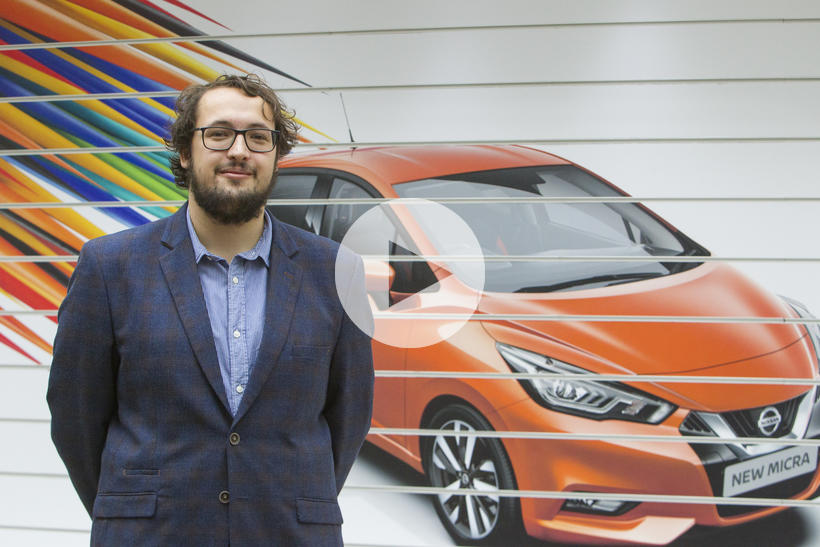
Autocar Courland Next Generation Award winner Stephen Crossley tells Max Adams what he took away from his latest placement with Nissan It’s fair to say that Stephen Crossley, the Autocar Courland Next Generation Award winner, got on swimmingly during his latest work placement at Nissan’s European technical centre. Having been declared the winner of our 2017 contest to unearth the automotive industry’s future stars, the Oxford Brookes University student had already completed successful placements at McLaren and Honda, before moving to the Nissan Technical Centre Europe (NTCE) based at the Cranfield Technology park in Bedfordshire last month. There he’s been working closely with the engineering teams, along with Andy Todd, director of body, exterior and CAD engineering and Russell Wilkins, body design project engineer, on an investigation into the best way to install door locks, gleaning some insights into how to improve the process. At Cranfield, Nissan carries out design and development work for all the vehicles it produces in its European factories. NTCE is also the birthplace of the wildly successful Qashqai small SUV. James Frankland, section manager of communications, explains that the company recently built its three millionth Qashqai in the UK since that model’s launch in 2007. The Qashqai is a car that Stephen got to know quite well during his time at Nissan because he got to watch it being built at the factory in Sunderland alongside the Leaf EV, Juke and X-Trail SUVs and Infiniti Q30 and GX30. “Previously, I was with the chassis team at McLaren and that’s very much a team that’s focused solely on performance and then ride comfort, whereas Nissan is focused largely on comfort. It was quite an interesting contrast,” says Stephen. He also got to witness Nissan’s chassis team at work at Millbrook test facility: “I spent a day with the noise, vibration and harshness (NVH) team to find out how they test their cars for NVH and what they do to reduce it. They were looking at wind noise from around the windscreen and how to reduce it, but also how to reduce the costs of bringing down noise levels.”Life as an engineer at Nissan is not all about driving and developing the cars, however. There’s also some administration work, which did surprise Stephen.“It’s been nice seeing how varied the job of being an automotive engineer actually is,” he says. “It sometimes involves doing something that’s not engineering related. For example, when Nissan’s engineers were developing the heated windscreen that’s now available on the Qashqai, they had to pitch it in a presentation to another department. They had to explain what it was, what the advantages were and then go on to say how it fit in with Nissan values and which other manufacturers were doing it in this segment.”Stephen’s time at Nissan was also useful in helping him to furtherunderstand the intricacies of developing the ride and handling of a car: “It’s been quite interesting because it’s a very difficult thing to do with a car such as the Qashqai, which has to be an all-rounder.”
The engineering challenges stem from the fact that the Qashqai not only comes with multiple wheel sizes, but two rear suspension options depending on whether you have front-wheel drive or four-wheel drive.The engineering team has the task of tuning the various suspension set-ups to make sure they all maintain a similar level of driver comfort.
Andy Todd, who is a member of the Autocar Courland Next Generation Award judging panel and worked with Stephen during his placement, says the company was sad to see him move on to his next task: “We get some good people through the door via the award, so it’s important that while Stephen was here, we gave him a real flavour of what it’s like to be on the front line of engineering.
“One gets the sense that my colleagues have been giving Stephen the full sales pitch, because not only has he been up to the factory and to Millbrook, he’s also been to the Infiniti technical centre [which is in partnership with] the Renault Sport F1 team. We wanted to show off everything we do here at Nissan because Stephen’s a very good engineer and maybe we could entice him back.”
Stephen’s next placement is with Toyota GB at its headquarters in Epsom, Surrey. He’ll experience the product marketing aspect of the car industry, finding out what Toyota is doing in terms of advertising its current rangeand conducting market research into what customers want from future models.






